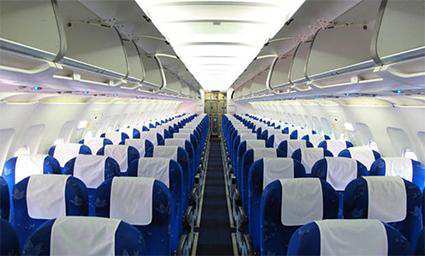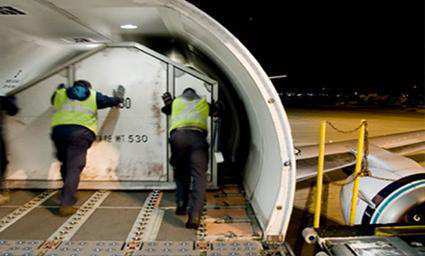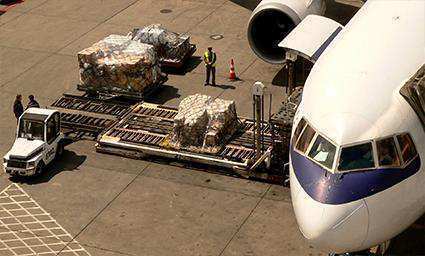
Pests have travelled with man since antiquity. Through aircraft, their transfer and spread over long distances has become easier and quicker. Upon arrival at destination these organisms increase the risk of disease transmission and of natural balance disturbance. Additionally, in the restricted area of passenger aircraft, their presence may result in a higher probability of interaction with humans.
Strict international regulations govern pest management on aircraft, ensuring the safety of passengers and the integrity of sensitive aircraft materials. These regulations stipulate the use of specifically approved biocide formulations and the exact location where these should be applied within the aircraft. Special attention is given regarding the mosquito control methods, which are considered of major importance, due to the serious diseases these insects transmit.
Defon's has developed an Integrated Pest Management (IPM) system, especially structured to be consistent with the World Health Organization (WHO) disinsection protocol for aircraft. This relates to the fuselage (flight deck, passenger cabin and cargo hold) and complies to international aviation safety standards.

Pests have travelled with man since antiquity. As air transport increases, so the risk is set to grow from pests (imported pests) that get transported through airlines. Aircraft enabled their spread to new countries and continents, where they may not have natural enemies (predators and competitors), easier and quicker than ever. Their establishment there can disturb the natural balance of the environment and also result in the transmission of new diseases for these countries.
In aircraft, mosquito control is of major importance due to the seriousness of diseases these insects transmit. They can enter through open doors in the cabin area and when loading cargo in the hold whilst aircraft can transport them around the planet.
Pest control in aircraft is governed by International Health Regulations (IHR). Regarding mosquitoes, the World Health Organization (WHO) recommends disinsection procedures for the fuselage (flight deck, passenger cabin and cargo hold), which comprise the following options:
Cabin
- Residual 1
- Non-residual:
- Pre-embarkation
- Pre-flight (before boarding) and Top of Descent
- Blocks Away (prior to take off)
- On-arrival
Hold
- Residual 1
- Non-residual:
- Pre-flight
- Blocks Away
- On-arrival
1Residual disinsection treatment must be undertaken at intervals not greater than 8 weeks apart while the aircraft is undergoing its scheduled maintenance.
-
Previously, aircraft disinsection for mosquitoes was carried out with aerosol-type insecticides administered by the crew once passengers had boarded and the cabin doors were closed (Blocks Away or Top of Descent or On Arrival). This method is in decline as there have been recorded cases of respiratory complaints, asthma, etc.
-
Currently, residual disinsection is the preferred procedure by most airline operators whilst conducted by professionals. It offers the added advantage of lasting protection for up to 8 weeks, not only against mosquitoes but crawling insects as well. The aircraft is re-treated during its routine servicing interval to maintain a viable insecticidal barrier.
Reasons to control pest infestations
Some of the most important reasons to control pest infestations in aircraft include:
- Protecting the health of any person on board that could be at risk in a pest-infested environment, by:
- preventing direct transmission of diseases from pests to humans, e.g.
- malaria, caused by protozoa of the genus Plasmodium, and Zika virus which are both transmitted via mosquito bites.
- preventing indirect transmission of diseases from pests to humans caused through contamination of food and/ or surfaces with pathogens, e.g.
- food poisoning caused through transmission of E-coli bacteria via cockroaches, etc.
- Preventing damage to cargo caused by rodents.
- Preventing damage to aircraft, e.g. rats and mice can cause damage to aircraft avionics by gnawing through wiring or other sensitive equipment, compromising air safety.
- Protecting any person there from the distress caused by pest presence and from the possible panic that is intensified in confined spaces, especially when combined with the fear of flying. Beside the usual pests with public health significance found in aircraft, the presence of many others have been recorded at times, e.g. spiders, scorpions, etc. Additionally, nuisance pests with no health significance have also been documented, such as crickets, grasshoppers, praying mantis, etc. Their presence can still cause disturbance and agitation.
- Preventing loss of customers and damage to reputation that occurs when the news of pest presence is communicated, resulting in a further decline of clientele.
- Preventing the imposition of sanctions by the health authorities.
Pests relevant to this sector
Pests that are frequently detected and cause major problems in aircraft are listed below. For additional information refer to section: Pest library.
Mosquitoes
Rodents (mice, rats)
Cockroaches
Bedbugs
The solution offered by Defon
Defon, based on years of experience, addresses the above issues by implementing its Integrated Pest Management (IPM) system which has been especially structured to be consistent with the World Health Organization (WHO) disinsection protocol for aircraft. The following is a general description of this system’s methodology, detailing some characteristic examples.
-
Site survey which focuses on:
- Food preparation, serving and storage areas, e.g.
- cockroaches are introduced via food supplies and infested hand luggage in the aircraft cabin. These can transfer to and from aircraft galleys and passenger areas via food carts.
- Seat upholstery and carpeting, e.g.
- Bedbugs are introduced here via infested hand luggage. Their bite causes itching and great discomfort.
- Cabin storage areas such as overhead lockers, etc.
- Toilets.
- Cargo hold area, e.g.
- mice and rats can enter aircraft through cargo containers, which makes their detection difficult
- cockroaches can also be introduced through cargo and passenger luggage in this department.
- Cargo compartment area for pets, e.g.
- Fleas and ticks may also be transported to aircraft via animals.
-
Development and implementation of the Action plan.
Residual disinsection is carried out with approved biocides that meet international aviation safety standards [Aerospace Material Specification (AMS) 1450A] which are applied in targeted, specific locations within the aircraft. This method is safe for passengers, crew and on sensitive aircraft materials such as metals, plastics, paints, fabrics, etc.
Defon also offers comprehensive services for the control of rodents on aircraft.
-
Service report submitted within the Report folder.
In certain circumstances, where necessary and possible, specialized Fumigation services can be carried out, amongst others.
As part of Defon’s Integrated Pest Management (IPM) system, if requested, support can be offered through Consultation Services with education and training regarding prevention of pest problems and best hygiene practices.
Upon request, Defon can also provide disinsection aerosol products which can be administered by the crew of the aircraft and meet international aviation safety standards.
Defon safeguards public health, the environment and the economy from the consequences rising from pests, by preventing their survival in aircraft and their geographical spread, resulting in the protection of passengers, crew, airport employees and local communities upon aircraft arrival.
Defon’s personnel are specially trained in-house to meet the World Health Organization (WHO) disinsection protocol for aircraft. Upon completion of work, a pest control certificate is issued, including verification of residual disinsection.






